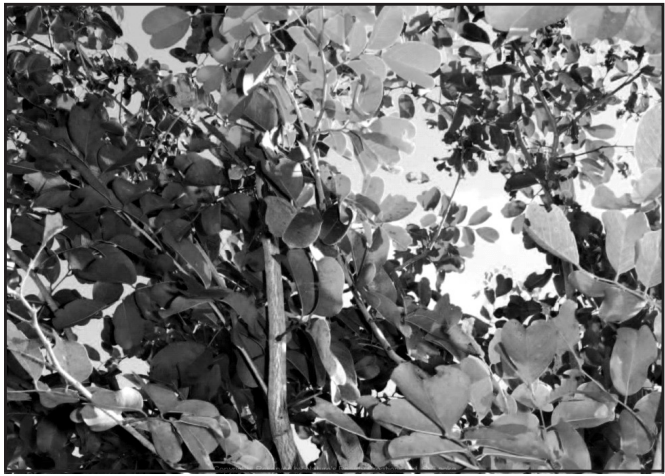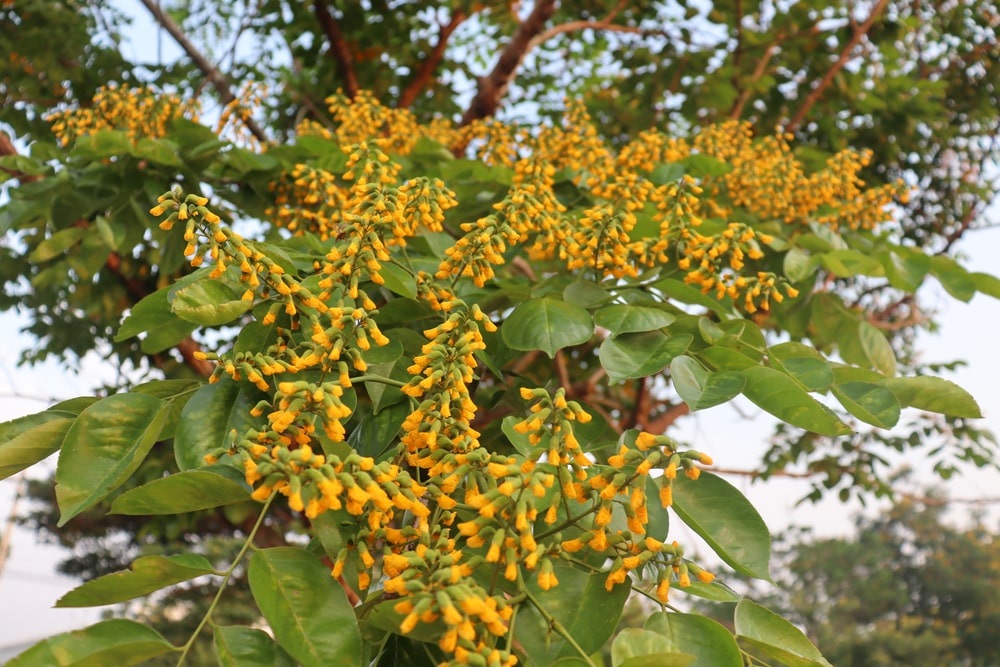Synonyms: Malbar Kino, Indian kino tree, Cochin Kino.
Biological Source: It is an unorganized drug obtained in dried juice of Pterocarpus marsupium Linn. The juice is collected by making an incision on the stem bark.
Family: Leguminosae.
Geographical source: It is found in Ceylon and India (forest of Karnal, Kerala, West Bengal, Assam, Gujarat, Madhya Pradesh, Uttar Pradesh, Bihar, and Orissa).
Collection and Preparation of Pterocarpus
Table of Contents
Many wide and short tubular cells are arranged in rows in the phloem of trees. These cells are filled with red astringent fluid which flows upon incision. Vertical incisions are made in the bark. The filled juice oozes out which is collected into small cups of leaves or other convenient material. This fluid dries in the sun and becomes a dark mass that breaks into the form of smaller grains. Sometimes it is boiled before evaporation because this operation modifies the subsequent behavior of the drug.

Description of Pterocarpus
- Form: Small, glistering, angular grain.
- Size: Grains are 3 to 5 mm in diameter and sometimes more than 10 mm.
- Colour: Transparent or dark ruby red.
- Odour: None or odourless.
- Taste: Astringent.
- Solubility: Partially soluble in cold water, soluble in hot water, and alcohol.
Constituents: The chief constituent of kino is kinotannic acid (70 to 80 percent). Other constituents are kino red, Catechol (κ-pyrocatechin), tannin (gallic acid), and resins.
Chemical Test of Pterocarpus
- When the drug solution is treated with ferrous sulphate, it produces the green colour.
- The drug solution is added in alkali solution like potassium hydroxide, purple or violet colour develops.
- A precipitate is formed with mineral acid treatment.
Uses of Pterocarpus
It is used as astringent, in the treatment of diarrhea and dysentery, bleeding gums and toothache, and diabetes. It is also used in dyeing, painting, and tanning industries.
Substituents of Pterocarpus
Kinos have been obtained from numerous plants belonging to various families e.g. Leguminosae, Myrtaceae, Polygonaceae, Myristicaceae, and Saxifragaceae.
- Botany Bay kino: It is obtained from various species of Eucalyptus (Australia), the most suitable being E. calophylla R. Brown, Family Myrtaceae, the tannin of which does not gelatinize. The drug occurs in irregular dark red pieces.
- African kino: It is obtained from Pterocarpus Erinaceus Poiret, family Leguminosae in West Africa. It contains about 50 percent of kinotannic acid and resembles Malabar kino.
- Jamaica kino: It is an extract obtained from a decoction of leaves, wood, and bark of Coccoloba uvifera Linn, family Polygonaceae.
Make sure you also check our other amazing Article on : Catechu (Black Catechu)
